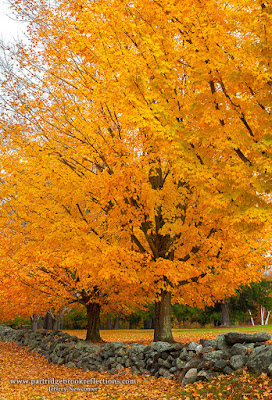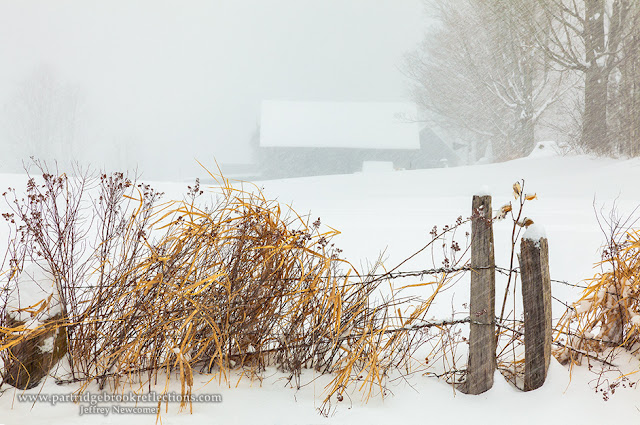A Few Disjointed Thoughts on the Art and Craft of Digital Photography

Some years ago I went through the process of applying to the League of New Hampshire Craftsmen for juried membership. My application and sample images were accepted and then, after a long silence, I was told that the decision had been made that digital photography would not be considered as either as craft or art. It was explained to me that digital processes where considered "automatic" and not requiring any artistic input. They would only accept photographers using "chemical" processes for their work.
I was annoyed by what I felt was a shallow understanding of the opportunity for art and craft that digital photography provides. I had been a "chemical" photographer for years, but like many, I moved to digital when I realized that I could exert much better control of the whole process, from the initial image to the final print. I must admit that I retain a strong nostalgia for my wet darkroom days. I would love to find a cologne with the intoxicating scent of fixer, but, earlier this year, I finally donated all my darkroom equipment to the Vermont Center for Photography.
Dealing with Rejection
Despite my rejection, I have always enjoyed the artistry of the members of the League and have admired the energy that the organization has exerted to promote the their work. The League has established 7 beautiful galleries throughout New Hampshire and runs its Annual Craft Fair every August at the Mt Sunapee Resort. I have a number of good friends who are members of the League and whenever I see them, I take the opportunity to engage in a little good-natured moaning about my rejection. Recently Juried member Bob England, who does remarkable wood-working, told me that the league was sponsoring a show on the impact of technology on the crafts and he thought this might be a good time to revisit the restrictions on digital photography. My ego hasn't been trampled in awhile so it seemed reasonable to take another pass.
Rules of the Craft
I can understand how traditional craftsmen might consider any photography to be on the fringe of what might be seen as a "hand-made" craft, but the league has embraced the work of many fine photographers. So why the absolute distinction between "chemical" and other methods of recording images? From my research I discovered that the same restrictions are still present in the League's guidelines for photography. In the first paragraph is the unequivocal statement, "The League accepts both traditional and chemistry-based photography". "All digital processes are excluded". Seems pretty strait forward, but then I reviewed the information on some of the league's twenty three photographers. I was impressed with the variety and quality of the work being done.
From an incomplete survey of information on the league web site, as well on personal sites, I found numerous examples of photographers who have switched to digital photography, often citing the benefits of better artistic control. Of those who proudly still shoot using film, many note that they scan there images and use printing techniques which appear to involve ink jet printers to create archival prints. Certainly many still use an "an all chemical process", but, as it should be, the techniques employed for artistic expression demonstrate a healthy degree of variation.

Digital Orphan
So why is digital photography seen as an orphan, not finding a home in either the definition of art or craft? To me the art and craft of Photography regardless of the recording medium are actual two separate pieces leading to the same goal, the unique expression of a view of the world.
Craft is the system one masters to be able to create a work which is the reflection of a personal vision. In photography we apply our craft both while shooting and in the "darkroom" (chemical or digital) to interpret the reality that we observe. Painters do the same with different tools, but it is the interpretation no matter how it is rendered that brings the art to life.
The Craft of Photography
So what is the "craft" of photography. It is actually the combination of many decisions and manipulations. It starts with choosing a subject and deciding when and in what light it should be captured. The angle of view and subtleties of composition are all crucial before the shutter is pressed, along with the impact of aperture and shutter speed on exposure, depth of field and motion. The manipulation of these factors is the same regardless of whether the recording media is film or digital.
Digital Photography
In digital photography the image is recorded on the digital sensor.
 |
| The Digital Darkroom, Photoshop |

Chemical Photography
"Chemical" photography is not especially different. With film, the
 |
| My Chemical Darkroom 1977 |
That is what art is all about. Regardless of the craft used, art comes from an individual interpretation of reality. Whether done with pigment smeared on a canvas, a chisel on stone. the response of light sensitive chemicals on plastic or the signal from light sensitive chips on a sensor, It always comes down to the magical ability of the artist to draw the viewer to his or her special vision.
It would be an honor to be considered among the talented artists in the League of New Hampshire Craftsmen, but for me, it is a worthwhile exercise just to explore my own place, balancing craft and art, and glorying in the amazing range of human expression.
Jeffrey Newcomer
partridgebrookreflections.com









This policy has been long overdue for updating to the real world, in my opinion. I, too, attempted to apply for membership years ago, only to find the prejudice against the evil digital world. The most-expertly photographed and printed photos I've ever seen have, for a long time now, been exclusively digital. I've seen very well-made chemical photos, of course, but the digital process has actually improved what can be done, and the results are obvious to an impartial judge.
ReplyDeleteI guess we'll just have to wait for this generation of LNHC arbiters to retire and be replaced by people of this century.
Thanks Ted. I'm hopeful that the powers will be open to the new state of photography. Changes have come fast and craftsmen involved in other areas can't be expected to be fully conversant with the current status of the art and craft of photography.
DeleteAlways i appreciated such helpful and useful post .
ReplyDeleteHi there! Nice post! Please tell us when I will see a follow up!
ReplyDeletefree picture quotes
Very informative and great post. Thanks for sharing with us.
ReplyDeletePhotography is considered as a art. Photography attempts to catches certain occasions and pass on the importance of these occasion to individuals. Photography and painting are works of art that have basic establishment - creative mind.
ReplyDelete